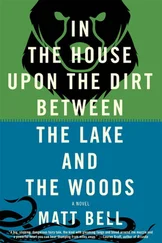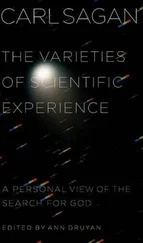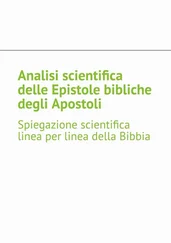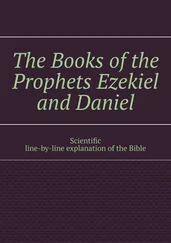18 We know that whoever is born of God does not sin; but he who is born of God keeps himself, and the evil one does not touch him. («Born of God» is sinless).
19 We know that we are of God and that the whole world lies in evil. (This author declares «that we are from God and that the whole world lies in evil,» but this world was created by God the father!).
20 We also know that the Son of God has come and given us light and understanding, so that we may know the true God and be in his true Son Jesus Christ. This is the true God and eternal life. (The son of God the father «came and gave us light and reason.» Translated from the religious language into everyday: the priests-hypnotists sent their hypnotized prophet to the «children of God», who inspires what is beneficial to these priests-hypnotists).
21 Children! keep yourself away from idols. Amen. (It is necessary to guard against «wrong» gods. The first conciliar epistle of John, consisting of five chapters, has been attributed to the Apostle John since ancient times. It is called conciliar, because it is written not to any one person, or to any one church, but to believers of all places and times. The epistle was written around 68 AD and aims to warn believers against the false teachings of heretics who rejected the «deity» of Jesus Christ).
5. The Second Conciliar Epistle of the Holy Apostle John the Theologian
Chapter 1
1 Elder – to the chosen lady and her children, whom I truly love, and not only I, but also all who have known the truth (Elders – presbyters in the early Christian church called the leaders of the community of the first Christians. In the Apostolic Church, both presbyters and bishops were sometimes called that, without strict distinction. The apostles themselves were called presbyters, or elders. An appeal to a certain lady and her children).
2 for the sake of the truth that abides in us and will be with us forever. (The truth supposedly «abides in us and will be with us forever»).
3 May grace, mercy, and peace be with you from God the Father and from the Lord Jesus Christ, the Son of the Father, in truth and love. (Here it is said in the name of the two gods: Yahweh and «his son» Jesus Christ).
4 I was very glad that I found of your children walking in the truth, as we received the commandment from the Father. (The children of this «chosen lady», «walk in the truth», that is, they are obedient and believe in Yahweh and Jesus Christ, an analogy with receiving a commandment, that is, instructions, from Yahweh).
5 And now I ask you, lady, not as a new commandment prescribing to you, but the one that we have from the beginning, that we love one another. (The original commandment is love, in fact, love is a feeling that arises as the brain is formed, is also observed in animals, in the form of neural connections in the brain, there are different forms of love: for God, homeland, children, a representative of one’s own and the other sex, fetishism – the deification of various objects, etc.).
6 But love consists in our doing according to his commandments. This is the commandment that you have heard from the beginning, that you should act according to it. (Here love is interpreted in the form of the fact that it is necessary to act «according to His commandments», that is, Yahweh and Jesus Christ).
7 For many deceivers have entered the world who do not confess Jesus Christ, who came in the flesh: such a man is a deceiver and an antichrist. (The emerging Christians formed competitors, and in the very original Christianity there was no unity, such people were considered seducers and antichrists).
8 Watch yourselves, so that we do not lose what we have worked for, but to receive the full reward. (The statement that it is necessary to fight against false teachings, otherwise everything can be lost).
9 Whosoever transgresses the teaching of Christ and does not abide in him has no God; whosoever abides in the teaching of Christ has both the Father and the Son. (The condemnation of those who transgress the teachings of Christ and do not abide in him, the one who «abides», that is, observes the attitudes of emerging Christianity, he has two gods: «Father and Son», that is, Yahweh and the son. According to a number of researchers, the trinity of gods emerged later in Christianity as a link between polytheism and monotheism during the transition from polytheism to monotheism. The Trinity existed in the religions of Ancient Egypt (Osiris, Isis, Horus), Ancient India (Brahma, Vishnu, Shiva), Babylonia (Anu, Ea, Bel), etc., reflecting the fact of the existence of a monogamous family (dad, mom and child, the role of mom is downplayed due to the rule of patriarchy). «The head of the Ugaritic-Canaanite pantheon was the god El,» writes M.I. Rizhsky in the book «Biblical Prophets and Biblical Prophecies», pp. 24—25, «like the Jews, this word meant „god“, but became a proper name. El had a spouse, the goddess Asher, or Ashirat, and a brother, the god Dagon, the patron of harvests, who later became the main god of the Philistines who settled in the Canaanite land, one of the „peoples of the sea“. But a particularly active and significant figure of the Ugaritic pantheon was Baal, the son of Dagon. In the texts of Ugarit, Baal acts as the god of thunderstorms, the god of war and at the same time as the bearer of rains and harvests, often paired with the goddess Anat, extremely militant and also the patroness of fertility. The cult of this goddess, as well as the cult of another goddess in this pantheon – Astarte, was orgiastic in nature and was associated with sacred prostitution. These were the gods worshipped by the Canaanites of Ugarit and the Canaanites of Palestine, and who, apparently, also became the gods of the Israelites after they found themselves in this land, together with their ancient god of deserts and mountains, Yahweh: when the conquerors settled in Canaan, finally moved from nomadic cattle breeding to sedentarism and farming Obviously, the cults of the Canaanite gods should have become especially attractive to them, since these gods were mainly patrons of agriculture, and their cults were cults of fertility. The bull was the personification of the mighty productive force of nature among many ancient peoples, and archaeological excavations in Palestine found cult figurines of a bull in ancient layers. Stone and wooden pillars in the form of a phallus – a male reproductive organ – were placed in the fields, or such phallic figures were buried in the soil, which was supposed to magically increase its fertility»).
10 Whoever comes to you and does not bring this teaching, do not take him into the house and do not greet him. (The fight against false teachings).
11 For he who greets him participates in his evil deeds. (The fight against false teachings).
12 I have many things to write to you, but I do not want to write on paper with ink, but I hope to come to you and speak from mouth to mouth, so that your joy may be full. (There should be a visual meeting soon).
13 The children of your chosen sister greet you. Amen. (Greetings from the sister’s children. Amen – (from others-Heb. «Let it be true, true.» The message dates back to the end of the I century. The second Conciliar epistle of John contains only one chapter; it is written to a certain chosen lady and her children, and is an allegorical appeal to the church and its members).
6. The Third Conciliar Epistle of the Holy Apostle John the Theologian
Chapter 1
1 Elder to the beloved Gaius, whom I truly love. (Greeting to Gaius. The third epistle of John is addressed to a private person).
2 Beloved! I pray that you may be well and prosper in everything, as your soul prospers. (Prayer for Guy).
3 For I was very glad when the brethren came and testified of your faithfulness, how you walk in the truth. (Guy behaves «correctly»).
Читать дальше












